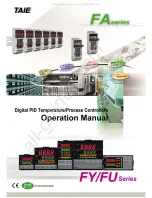
8
CONNECTING A LOCK
The relay contacts have in built protection against transient spikes but when using a pure
inductive load with no back EMF protection, extra protection must be fitted. This can be
in the form of a metal-oxide varistor (MOV) or diodes (supplied). The positive (+) supply
of an inductive load should be connected to the cathode of the diode and the negative (-)
to the anode.
FAIL OPEN LOCK
... The fail open lock will leave a door unlocked when the power supply
cuts out. This means that power is continuously applied to the door to prevent the
mechanism from opening. When a valid card is swiped, the door controller cuts power to
the lock and the door can be opened. If power fails unexpectedly, the lock is also released,
to leave the door unsecured. This type of lock is suitable for the internal doors of a
building.
The drawing above depicts a fail open lock with a monitored break glass triggering input
4 when the break glass is pressed to open door. If a break glass unit is not required LK6
can be left connected. If a break glass is not used, a mechanical method of releasing the
door must be supplied.
IMPORTANT NOTE:
LK6
LK6
LK6
LK6 links 0V
0V
0V
0V to the COM
COM
COM
COM connection of the relay output. This must be
fitted in this configuration. If connected to a Barrier/Turnstile, this link must be removed
for Volts free operation.
RELAY CONTACTS
: The relay contacts are protected against transient spikes by non-
polarised suppression. Relay contact rating: 1A @ 30V for each pole.
Breakglass
NC
Breakglass
NO
Breakglass
COM
Lock
Lock































